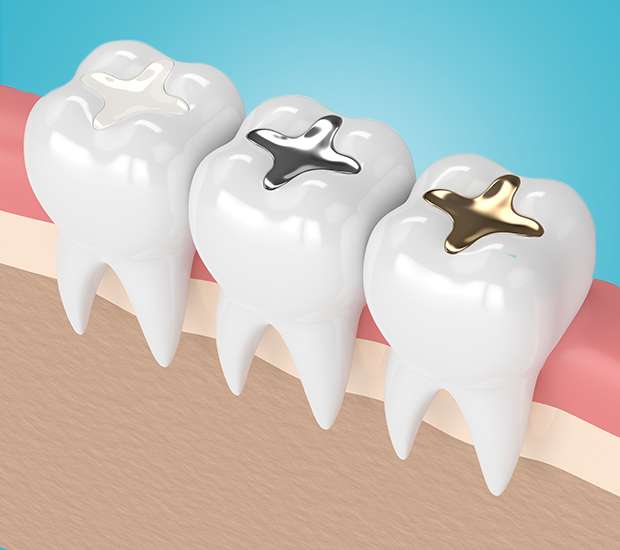Composite Fillings and RestorationsMiami, FL
At Dr. Rita The Smile Designer, we use composite fillings as a treatment method for restoring teeth that have suffered from tooth decay and to repair small to moderate chips, fractures, and defects of the enamel.Composite, or resin, fillings may also be used to enhance the look and appearance of malformed, unsightly, uneven, or discolored teeth. If you live in Miami, FL or in the surrounding area and are looking for a natural-looking restoration, we encourage you to call (305) 858-0505 and schedule an appointment. Our team has the necessary experience with placing these tooth-colored fillings and can work to ensure that the patient is comfortable throughout the procedure. This is one of our most frequently used procedures, since a filling is typically placed after removing tooth decay (common cavities). If you have amalgam fillings now, we can even replace these with composite ones. To learn more, call and schedule a dental examination.
Your new fillings look beautiful but may feel temporarily sensitive to cold, hot, sweets, or pressure (chewing). This is normal and should improve within days.
Mild pain medications may be taken to alleviate any discomfort. Dr. Rita typically recommends taking up to three 200mg tablets of Ibuprofen/Motrin, combined with one tablet of extra strength Tylenol, every six hours. Please contact our office should the pressure sensitivity persist or the sensitivity to hot or cold increase. Should these medications not be indicated for you please contact our office for alternate recommendations.
Your new resin fillings are set once you leave the office and can be used to chew with immediately.
The Benefits of Getting a Tooth-Colored Filling
We can place a composite resin filling fairly quickly. This is an affordable and durable restoration that will look similar to a regular tooth. We make sure to complete the procedure in a way that is comfortable, effective, and fast. In some situations, depending on the patient and the position of where the filling will go, we can complete a filling within 60 minutes. If you live in the Miami area, we encourage you to consider the many benefits of getting tooth-colored fillings instead of amalgam ones.
Silver vs. Tooth-Colored Filling: What You Should Know
Tooth-colored fillings are safer for your health since they consist of resin or a plastic material. Silver fillings are typically not silver, but a metal alloy that includes several materials with mercury among them. While many people believe amalgam fillings are perfectly safe, the data can be contradictory from study to study. If you want to avoid the risks that come with mercury exposure, select tooth-colored fillings, or replace your existing silver fillings when they start to show signs of wear. Visit our Miami, FL dental office for more information.
Composite Dental Fillings FAQ
Q. What is a composite resin (white filling)?
A. Resin fillings match the shade of your natural teeth while providing the necessary level of protection. While many refer to a composite resin as a "white" filling, the actual shade resembles the hue of a natural tooth. Composite resin fillings function the same way as amalgam ones do; they are effective in restoring teeth that have suffered from decay or fracture. They blend in and enjoy a discreet nature.
Q. What are the advantages of composite vs. amalgam fillings?
A. The biggest advantages of composite vs. amalgam fillings is that composite tooth-colored fillings do not stand out. Patients do not have to worry about other people noticing the tooth-colored fillings. Another advantage is not having any mercury in the filling and decreasing the risk of associated health risks. To learn more about this option, call 3058580505 and schedule an appointment with our Miami, FL dental office.
Q. How are composite fillings used?
A. In our dental office, we use composite fillings to restore the remaining tooth structure after removing decayed, or carious, tissue. In other cases, we will use composite fillings to restore structural tooth damage. For example, if a tooth is chipped or loses some of the enamel, a composite filling may be the appropriate option to restore its form, function, and appearance.
Q. Can anyone get a filling?
A. No. At Dr. Rita The Smile Designer, we place fillings on a frequent basis. Minor to moderate structural or bacterial damage can be restored with a composite filling. However, more advanced tooth loss would be better protected by the placement of a full coverage restoration, also known as a crown or cap. In this case, a crown surrounds the entire tooth, providing a stronger and more protective option.
Q. What is the difference between tooth-colored or composite dental fillings?
A. Composite dental fillings are just one type of tooth-colored restorative material available. While professionals can use the alternate types of tooth-colored fillings interchangeably, there is more than one option when choosing from tooth colored restorations. Natural-looking fillings typically consist of resin, ceramic, plastic, or glass ionomer; the most common material being composite resin. Given its higher fragility, glass ionomer is the least predictable long term.
Q. How long do resin fillings last?
A. There is no set expiration date, but we warn patients that fillings can deteriorate and wear down just like normal teeth. This makes it important to practice good oral hygiene and to brush with a soft or electronic toothbrush while avoiding biting down on anything inedible like a pencil.
Q. Are there any special care instructions for cosmetic fillings?
A. No, you need to care for your fillings just like you do your other teeth. You need to brush at least twice a day and floss on a daily basis. We recommend using fluoride toothpaste, since this can help to further strengthen your teeth and prevent future decay. In some cases, we may even recommend a fluoride treatment in our dental office. You should also be careful to avoid doing anything that could damage your teeth; wear a mouthguard if applicable. Keep in mind that a filling is there to restore your tooth structure both in appearance and in functionality. This means we are not trying to restrict your activities or even what you can eat. Instead, we place fillings to ensure your life is not interrupted and you can return to your normal daily activities quickly.
Q. When can I eat like normal?
A. If you need to have a filling placed, we will first need to remove the decayed portion of your tooth and complete a thorough cleaning. Next, we will place the composite resin filling material into your tooth and shape it before the hardening it with a strong blue light. The shape needs to be just right so your bite will fit together correctly. It can take a couple of days to get used to eating on the tooth. Thus, while it will not be particularly uncomfortable, you may have one day where you feel as though you are adjusting. For more specific information, call (305) 858-0505 to schedule an appointment.
Check out what others are saying about our composite fillings on Yelp: Composite Fillings Miami
Questions Answered on This Page
Q. What are the benefits of tooth-colored fillings?
Q. What are composite fillings for?
Q. Will the filling change what I can eat?
People Also Ask
Q. How can I prevent tooth decay?
Definition of Dental Terminology
- Cosmetic Dentistry
- Cosmetic dentistry combines comprehensive dental principles with artistic sensibility to design and create optimally healthy and beautiful restorations intended to enhance the appearance of one’s smile while preserving ideal function and form.
- Decay
- Tooth decay is when the enamel of the tooth begins to breakdown as a result of bacterial invasion, causing an acidic induced erosion of healthy tooth structure.
- Dental Caries
- Dental caries are also known as cavities and can result from a lack of proper oral hygiene. A synonym of “decay”, and also called “cavities”, caries is a breakdown of teeth due to acids made by bacteria. The cavities may be a number of different colors from yellow to black.
- Dental Checkup
- A comprehensive oral examination that focuses on the evaluation of hard and soft oral structures including, but not limited to, the teeth, gums, jaw bone, jaw joint, bite, and cosmetic aspects of the smile. Both clinical and radiographic information is used to assess the status of the oral health while detecting any form of pathology that may affect the health of the oral cavity and its associated structures.
- Dental Filling
- A dental filling involves restoring the damaged structure of a tooth by using tooth colored resins or porcelain materials to restore natural form, function, and estethetics to the dentition.
- Dental Prophylaxis
- A dental prophylaxis is a professional and detailed cleaning that involves the removal of plaque, calculus and stains from the teeth,thereby reducing the risks of inflammation and breakdown of the dentition’s supporting structures.
- Dental Sealants
- Dental sealants are preventative restorations that contain a resinous material that is applied to the deep pits and fissures detected on the chewing surfaces of newly erupted teeth. These are used to help prevent dental caries from developing in children’s permanent molars and premolars.
- Dentist
- A dentist, also known as a dental surgeon, is a doctor who specializes in the diagnosis, prevention, and treatment of diseases and conditions of the oral cavity.
- Gingivitis
- Gingivitis is the inflammation of gum tissue that results from plaque, other infections in the mouth, and poor oral hygiene. Gingivitis can be a precursor to more advanced forms of periodontal disease if it is not controlled and reversed. Signs of gingivitis include soft tissue redness,inflammation, and bleeding. Proper brushing, flossing, and prevention helps to prevent and reverse signs of early gum disease.
- Preventive Dentistry
- Preventive dentistry focuses on education, modalities, and treatment designed to achieve and maintain optimal oral health, described as one free of structural, bacterial, and restorative breakdown.
- Tartar
- Tartar forms when plaque builds up on the surface of the teeth and calcifies into a hard surface that is much more difficult to remove. Its presence will require professional dental debridement and education on its prevention. Daily removal of plaque by proper brushing and flossing habits will reduce the incidence of tartar and the pathology associated with its presence.
- Tooth Enamel
- Tooth enamel is the outermost protective layer of the tooth. Enamel is white and visible. Its hard composition protects the underlying layers, dentin and pulp, respectively.
Back to top of Resin Fillings




